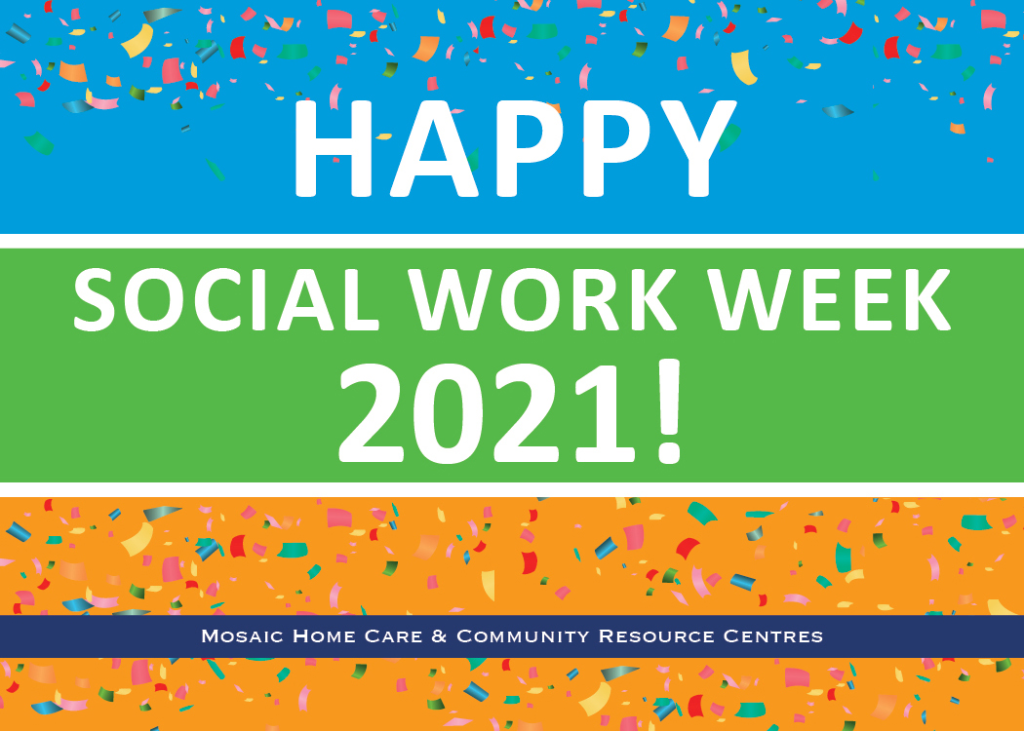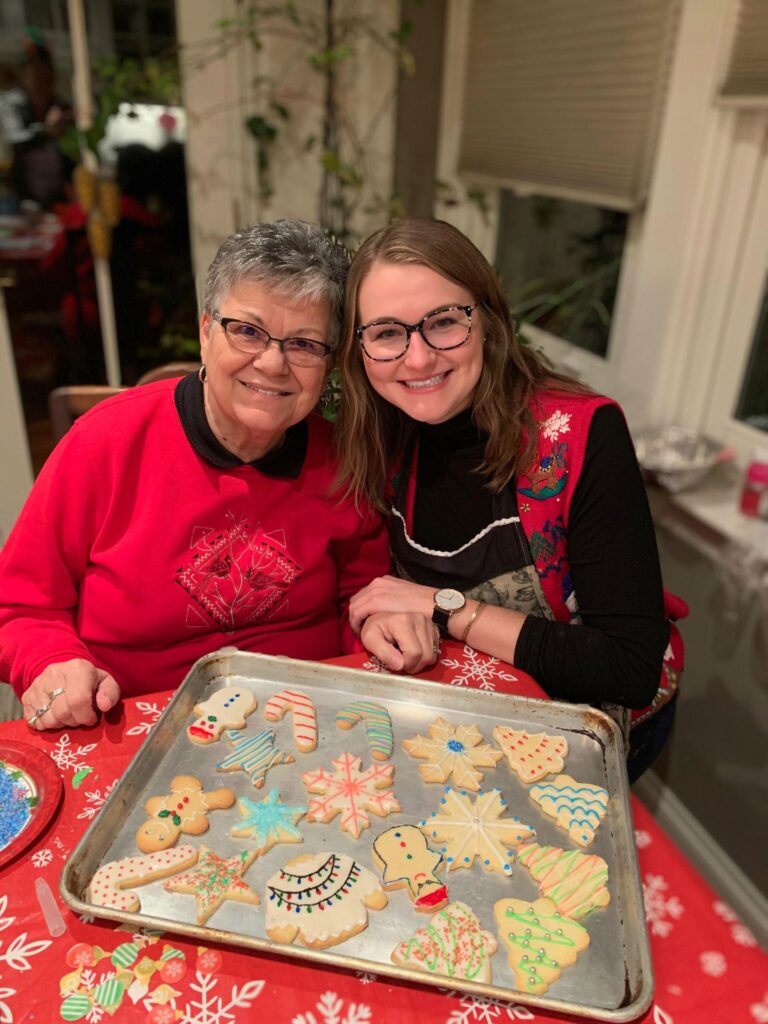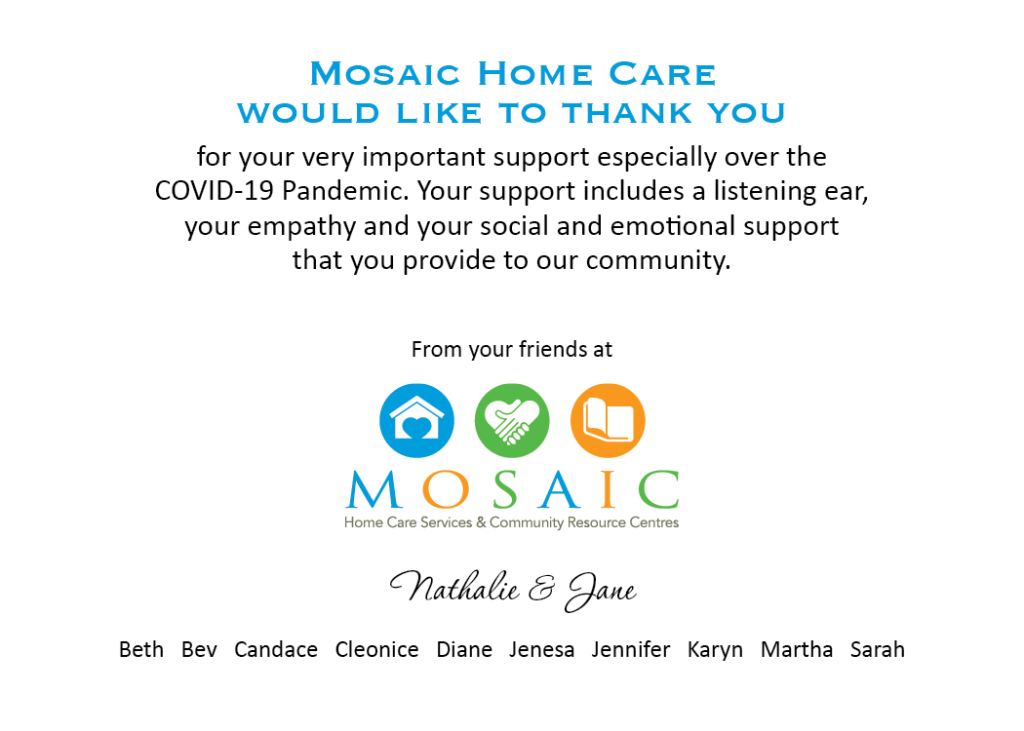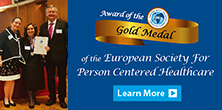My experience with booking and receiving the COVID-19 Vaccination
As I will be turning 60 this year I qualified for the Astra Zeneca vaccination pilot for those born between 1957 and 1961. I considered myself lucky to be able to receive a vaccination and turned up early morning Saturday 20th March at Rexall Pharmacy on Bloor St East. This was may early birthday present and one of the most significant events in my COVID-19 world!

The booking process through Rexall was quite easy and allowed you to select a location close to where you live. All you needed was information on your medical history, your doctor, and of course your health card number.
Once I had inputted my information and dates of availability I received an e mail with a final set of dates to choose from. I decided to have the vaccination on a weekend so that I would have time to recover from any side effects.
The whole process took no more than two weeks, a couple of e mails and a pre vaccination list of questions. On arrival at the pharmacy Rexall also provided me with information on what would happen and what to expect. After filling in all the final details and presenting my health card I only had to wait 10 minutes untill I was called.
Medical questions were asked again: if I had a cold, fever, if I had ever had COVID-19, if I had recently travelled outside of Canada and a few other questions. I entered the small room with the nurse and the AstraZeneka vaccine was administered. I was asked to sit for 15 minutes to see if there were any possible side effects or allergic reactions. The effects of the COVID-19 vaccine could be a sore arm, fever, chills, and dizziness.
Once I left Rexall, I was feeling great and ready for a little treat. Fortunately there was a McDonalds was in the same block as Rexall, so I had my favourite breakfast: egg Mcmuffin, hash browns and coffee! I then headed back home to the safety of my condo.
I was fine for the rest of the day until around 6 p.m. Then it hit me. I did not have a fever, but I was feeling extremely tired, dizzy and light-headed; I felt like I was on a ferris wheel, going round and round. This lasted for two days before I started to feel normal again. Such a reaction to a vaccine can be a good sign that your immune system is gearing up and I was happy that my body had responded!
COVID-19 is not like the flu. It can make you extremely ill, you may even require hospitalization and for some there is a risk of death. The young and healthy are not immune. So getting vaccinated is important.
The more we are vaccinated the less likely COVID-19 and its variants will spread amongst us. There are many reasons why we need to be vaccinated: the many needless deaths and severe illness that persons and families have experienced, the impact on mental health, financial security and the economy, on our health care system and our education of the young are some of the many reasons. Perhaps the most important reason going forward is to prevent opportunities for the virus to mutate and develop into strains that can bypass the defenses built by vaccination.
I have posted a not so flattering picture of me receiving the COVID-19 vaccination to encourage others to do their part in the fight against COVID.
Stay safe and socially distanced and Roll Up Your Sleeves for the COVID-19 Vaccination!
Welcome to March and our Spring events update!
Welcome to March: Spring is almost here and we are looking forward to finally getting outside again and coming together apart! Mosaic Home Care would like to thank you for your very important support especially over the Covid-19 Pandemic.
You can review our March 2021 video on You Tube for all the upcoming programs featured. https://www.youtube.com/watch?v=4T7LJ8BcypQ
Join Joanne Picot
March 16th from 1 p.m. to 2:00 p.m. Join Joanne Picot in our Zoom Functional Fitness Program Zoom Functional Fitness with Joanne Picot – Mosaic Home Care
A chance to knit or crochet
Every Wednesday afternoon from 1 p.m. to 2:00 p.m. we have our knitting group, a chance to knit or crochet, have discussions and make some new friends online. Zoom Functional Fitness with Joanne Picot – Mosaic Home Care
Julie Williams, visual artist, story teller and photographer
Since we can’t get away to travel Mosaic will be featuring Julie Williams, visual artist, story teller and photographer who will take us on a visual tour of France on Friday March 19th at 1 p.m. to 2:00 p.m.
Join us as Julie takes us on a delightful visual tour of France! You will experience the sights and cultures of this magical and breathtaking old-world country. Through Julie’s images we will savour quintessential memories of Provence’s narrow cobblestone streets, pastel-coloured homes, timeless ivy-covered walls, and terra-cotta tiled rooftops. The final stop will be in Paris!
Mosaic’s Zoom Community Café & Lianne Harris (Luck O’ The Irish)
Our ongoing Mosaic’s Zoom Community Café which we have been running for quite a number of years now and has been very successful. In March we will be featuring Lianne Harris who has presented many times to our Mosaic Community. She will be featuring a presentation call the Luck O’ The Irish. This will be held on Monday March 22nd from 1 p.m. to 2 p.m. Mosaic’s Zoom Community Café – Mosaic Home Care
Toronto Council on Aging “Seniors Surviving COVID-19” Webinar Series
The Toronto Council on Aging (TCA) is a registered, non-profit organization that addresses the issues and concerns of older adults in Toronto. Our vision is to create a community that respects, values and empowers seniors.
The “Seniors Surviving COVID-19” Webinar Series will provide seniors in Toronto with a series of online educational sessions. The topics features were based on the needs and interests of TCA members shared through surveys and phone conversations.
All webinars will be presented through Zoom and instructions on how to use Zoom are available on the TCA Website in the under the “Resources” section of the website (www.torontocouncilonaging.com).
Upcoming Dates: Wednesday March 17th, 2021 join Jane Teasdale from Mosaic Home Care Services speaking on “The Importance of Social Connections within our Communities: A Person-Centered Community Model of Care.
Cost: Free
Registration: Visit the Toronto Council on Aging Website for more information at www.torontocouncilonaging.com
My Life as an Opera Singer With Maria Soulis
Join us on ZOOM for a conversation with Maria Soulis about her life on the operatic stage! Her presentation will highlight how she decided she wanted to be a classical singer, the training and auditioning process, and the lucky breaks. Maria will share stories and pictures of some of the beautiful opera houses throughout Europe where she had the privilege of singing.
Mezzo-soprano Maria Soulis began her operatic career as a resident singer with the Regensburg Opera in Germany (1999-2002), afterwards branching out as a freelance artist in theatres throughout Europe. Nominated for the Juno in 2016, Maria continues to perform with Canadian Theatres and orchestras, in repertoire ranging from Baroque to new works.
Date: Thursday March 25th, 2021
Time: 1:00 p.m. to 2:00 p.m.
Registration required
My Life as an Opera Singer With Maria Soulis – Mosaic Home Care
Join Mosaic Home Care Services for Zoom Programs Online. Mosaic Home Care Services & Community Resource Centres have taken some of our programs online during COVID-19 Pandemic.
To register for all Mosaic Home Care programs call our offices at 905.597.7000 or info@mosaichomecare.com or beth@mosaichomecare.com if you need more information. A Zoom link for the program will be sent once you have completed the registration.
Service development update – EC Plus® and Family Counselling Services & Navigation
As you know Mosaic provides home care support services with an integrated holistic person centered care approach. We will be introducing EC Plus® and Family Counselling Services & Navigation for our clients, families and community as needed. This is provided by our team approach of nursing, social work, counselling and geriatric expertise. Stay tuned for more information. For more information about our home care services click here. Home Care Services – Mosaic Home Care
Vaccinations!
Dear Readers to our Mosaic Blog.
March is here at last and we appear to be getting closer to resolving many things COVID. Canada and especially Toronto has had a slow start to vaccinations but vaccine availability is now improving – that was then but this is now, fingers crossed.
Mosaic has participated, over the last few weeks and months in the many Zoom calls held for health professionals. We have engaged actively with the LHINS, community groups, Ontario Health Care teams and hospital IPAC units. We have aimed to stay on top of all things COVID including the latest information on vaccination rollout and registration for our front line teams, our clients and family members.
There are still too many loose ends and unanswered questions:
- Mosaic has been pushing, under the auspices Family Funded Care Partners Alliance, for all community PSWs and nurses to receive vaccinations.
- How do those without computers register for a vaccination, especially the older adult who may rely on others for their advocacy and support? Can a home care agency or a PSW register their client if the client doesn’t have anyone to do this?
- There are many home bound seniors who will not be able to get to the designated vaccination points. Other countries have provided at home vaccinations and so should Toronto Public Health .
- What about Family Caregivers, will they be able to get vaccinated irrespective of age?
At the end of the post we provide a list of resources and links about registration and vaccination from a number of different hospitals across the GTA.
Updates from hospitals and the Toronto Public Health will be provided to the communities on protocols with regards to proper Personal Protection Equipment, social distancing, protective masking and handwashing.
Mosaic Home Care will continue to do our part in providing resources and information to our Mosaic families, clients, staff and community.
Stay safe and socially distanced and “Roll up your Sleeves for the COVID-19 Vaccination” And stay tuned for our next blog from our Mosaic Client Services team and responses from our caregivers receiving the COVID-19 Vaccinations.
Finally, we know that there is some vaccination hesistancy across our communities. We believe that taking the vaccine is a monumental social and moral responsibility. Over the last year and a bit many families have been left devastated by the virus itself. The impact of COVID extends to the social, emotional and economic consequences of the world-wide response to the virus. If we decide not to get vaccinated we not only increase our risk of contracting COVID but of passing it onto others and of incubating and passing on a mutation. If you have concerns and are worried about vaccination then please contact your doctor or your local hospital for direction.
COVID Resources and Vaccinations updates from March 5th, 2021
North York and Mid-town
North York General: https://nygh.on.ca/covid19vaccination
Sunnybrook: https://sunnybrook.ca/content/?page=novel-coronavirus-covid-19-vaccine-information
Downtown Toronto
University Health Network: COVID-19 Vaccine Information at UHN
East GTA
Michael Garron Hospital: Online booking for COVID-19 testing | Michael Garron Hospital, Toronto East Health Network (MGH/TEHN)
Scarborough Health Network: COVID-19 Vaccine Information – Scarborough Health Network (shn.ca)
West
Trillium: https://trilliumhealthpartners.ca/covid-19/A/vaccine.html
Humber River: Coronavirus (COVID-19) Information and Booking – Humber River Hospital (hrh.ca)
North GTA
Simcoe Muskoka: https://www.simcoemuskokahealth.org/Topics/COVID-19
York Region: york.ca/COVID19Vaccine
Toronto Public Health: https://www.toronto.ca/home/covid-19/
For more information on our home care services and supports and a full listing of our social programs visit our website at www.mosaichomecare.com
Dementia-Friendly Creative -Arts Classes for Life Enrichment (Bitove Method)
Here is some information on The Bitove Method Arts Classes. Anyone looking for more information should connect with them at https://www.thebitovemethod.com/

Get Moving with Canada’s National Ballet School This Winter!
Take part in an interactive presentation and hear more about the benefits of dance and the Baycrest NBS Sharing Dance Seniors Program. Tune in to the First Link® Memory Café on February 23rd from 1:00 – 2:00pm.
Article provided by Canada’s National Ballet School:
At Canada’s National Ballet School (NBS), excellence, access and inclusion fuel our belief in sharing the transformative power of dance to change lives for the better. NBS knows how dance affects our bodies, minds and souls. We know it because we live it and help others live it every day. People of every age, ability and aspiration have a transformative experience waiting for them in dance.
Why dance?
Dance is a powerful, yet underutilized tool for health and well-being across all spectrums of Canadian society. Creative movement has the unique ability to connect people and provide comfort during challenging times. Research also suggests that dance is an exciting new direction in the study of aging and cognitive neuroscience, offering a unique combination of physical, mental and social benefits for seniors at home, in retirement and care facilities and with age-related illnesses like Parkinson’s disease and dementia.
The physical benefits of dancing in older adulthood may include:
● improved aerobic power
● improved balance and gait
● increased muscle endurance
● reduced risk of falls
● greater strength and flexibility
Dance may also be emotionally and socially beneficial for older adults by helping to reduce isolation, encouraging a sense of community and providing a space for creativity and artistic expression.
“Participating in Sharing Dance Seniors truly changed my life. It helped me
physically do things I haven’t been allowed to do for more than 50 years.” – Participant “When I dance, I feel free, ageless and euphoric.” – Participant
Discover the joy and benefits of dance – at home!
Baycrest NBS Sharing Dance Seniors – at Home
Baycrest and Canada’s National Ballet School (NBS), industry leaders in geriatric care and dance training, are offering FREE six-week dance courses for older adults, which can be accessed at home.
Weekly online classes are taught by professional dance teachers from NBS, are accompanied by a live musician, and include a variety of movement options to suit participants’ needs. Classes are 20 minutes in length and both seated and standing course options are available. Join any time and engage in these fun, creative and musical classes at your own pace. No dance experience required! Visit www.nbs-enb.ca/sharingdanceseniors and start dancing today!
Want to learn more? Take part in an interactive presentation and hear more about the benefits of dance and the Baycrest NBS Sharing Dance Seniors Program. Tune in to the First Link® Memory Café on February 23rd from 1:00 – 2:00pm.
Canada’s National Ballet School (NBS) and Baycrest, industry leaders in aging and brain health and dance training, have collaborated to develop meaningful dance activities for older adults. Through its artistry and physicality, dance supports overall physical, emotional and social wellbeing. Take part in this interactive presentation, and hear more about the benefits of dance and the Baycrest NBS Sharing Dance Programs.
Photos courtesy of Canada’s National Ballet School
Alzheimer Society of York Region – https://alzheimer.ca/york/
Canada’s National Ballet School Senior’s Dance Program – www.nbs-enb.ca/sharingdanceseniors
Mosaic Home Care – https://www.mosaichomecare.com/
Some Helpful Tips from Kristi Stangeland on Relaxation and Meditation
The coronavirus pandemic has profoundly changed so many aspects of our daily lives, including the way we work and play. Many of us are navigating a “new normal” that entails working from home while also balancing the responsibilities of childcare, eldercare, schooling, etc. Striking a healthy balance between work and home life has never been more challenging. And on top of that, it is also much more difficult to engage in our traditional strategies for dealing with stress, such as visits to the gym, church, the therapist, etc.
But there is something that everyone can do at home right now—and after the pandemic passes—to deal with life’s stresses: meditate. More than 20 years ago, I discovered the power of meditation and mindfulness to help me focus my thoughts, energies and insights. Without a doubt, meditation has helped me find more opportunities for peace, power and play in my life.
Regardless of where you are on life’s journey, it is never too late to take up meditation, especially since the benefits are so invaluable. Consider this:
- Meditation is a powerful tool that enables us to push away distractions and excuses so we can focus on what we really want to achieve and create the attitude for success that will get us there.
- Meditation boosts our resiliency so we can live with less fear of what might (or might not) happen.
- By allowing the mind to tune out distractions, we can train our minds to let go of the easy stuff so we have more energy to concentrate on bigger challenges with greater focus, creativity and productivity.
- When we meditate, we create the opportunity to focus on values that matter most to us. We can “clear the clutter” so we can find compassion and understanding for those in our families, our workplaces and our communities.
- • A Dutch study cited by the University of California- Berkeley’s Greater Good magazine found that even a 10-minute meditation practice for just two weeks led to enhanced quality and duration of sleep.
- Meditation leads to more inner peace and fosters forgiveness, the benefits of which are well-documented: less stress, anxiety and depression. But studies also show that forgiveness reaps physical benefits as well: lower blood pressure, improved heart rate and strengthened immune function.
- • When we focus on the meaningful things that have shaped our lives during meditation, we literally do ourselves good. Studies have shown that gratitude and appreciation can reduce the risk of death from cardiac disease.
Like so many things in life, the best way to enjoy the benefits of meditation is through a regular practice. As noted above, just a few minutes daily of dedicated mindfulness and meditation can significantly improve our physical and emotional well-being.
Through my business, My ParaVita, I provide my clients with additional techniques and insights on how to enhance their meditation so they can bring their practice to a higher level and reap even greater benefits from it. Through guided meditations, retreats and other wellness programs, my goal is to help people tune out distractions and negativity in their lives so they are better equipped to face life’s challenges with less stress and more serenity.
Kristi Stangeland is the founder of My ParaVita. She holds several advanced certificates and diplomas from some of the most renowned Chinese philosophers of our time. Learn more about her and her meditation business at www.MyParaVita.com.
Taking Care of Care in the Community
During COVID-19 many families and individuals have decided against Long-term care and older adult retirement residences. The risks of catching COVID-19 and of social isolation have been considerable over the period.
COVID-19 has also raised the curtain on long standing living and social care conditions in Long-term care. While Long-term care homes supposedly provide 24/7 care the amount of time that residents actually receive is considerably less. A 2018 study looking at data between 2014 and 2015 found an average of 2.55 hours of care a day across Ontario homes studied with little if any time allocated to meeting social and emotional needs. Numerous studies and reports have continued to find serious deficiencies in our long-term care system.
Before the crisis families who had loved ones in care often spent considerable time in care homes providing care and social and emotional support. Those who could afford would also pay for private care givers to go into the homes to provide additional care. Since the onset of the crisis visitation has been restricted and care provision has declined further in the face of staff shortages and other issues. Recent reports have documented the significant increase in medications being given to care home residents.
Other countries around the world, notably those in Europe, spend a far greater amount of their care budget on providing care in the community, allowing people to remain in their homes for longer, connected to their communities and their supportive social networks.
The question is how do families and family caregivers who might have considered putting their loved one into care make the transition to providing more care in the home? Many caregivers are already struggling and with COVID-19 they too have become more socially isolated and distanced from their social support networks.
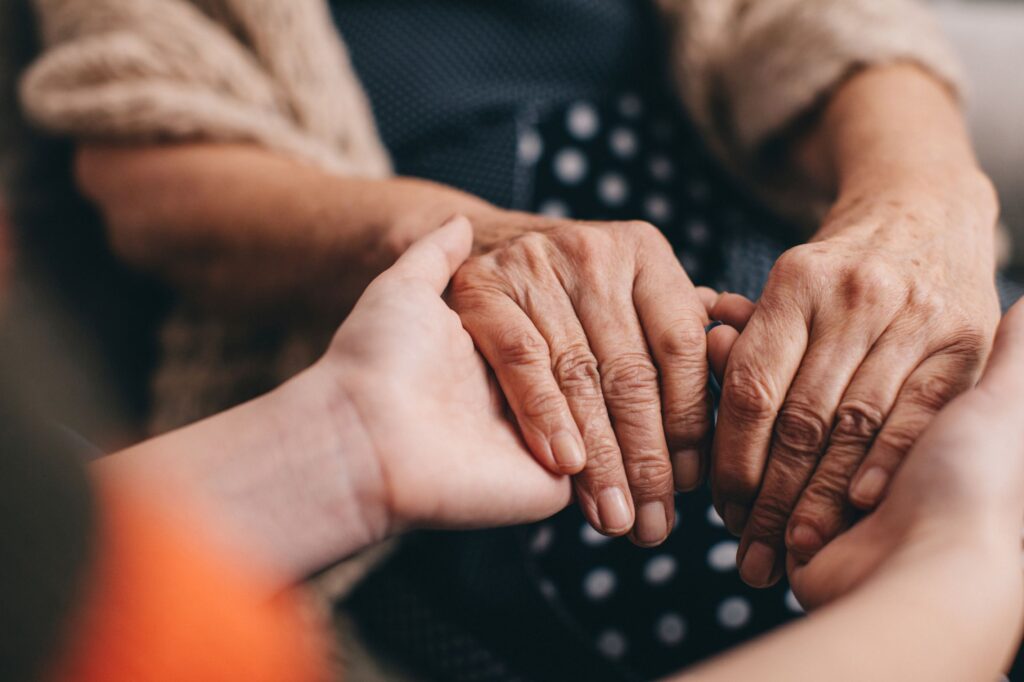
For those persons with complex care needs the key to looking after persons in their home and community is to find a way of working with family caregivers, public health and family funded providers and to take advantage as much as possible of local community resources. Social networks and addressing the social, emotional and health needs of family caregivers is also an important aspect of the overall plan.
Public Health provides limited input over and above the limited care current funding allows so families are often forced to either go it alone or to pay for a professional social worker and other care providers to come in and develop a cohesive plan of care that addresses the wider care needs across the day to day.
At Mosaic we have a client services team staffed with nurse, social work, geriatric and counselling expertise that we use to bring to bear to develop a cohesive plan and supports to families, family caregivers and the person at the heart and centre of care. We provide case management services for our families that help address the fundamental needs of care over and above those provided by public health. We support the continuing social, emotional, cerebral, spiritual, creative, cultural and physical capacities of assets of the person. Our care is designed so the person as an intrinsic being can continue to express their unique human individuality. We look to social networks and community assets as well as public health services and clinical relationships to help determine what we can and cannot do and work with families to achieve realistic holistic goals. We also work with families to advocate for care provided in long term care homes.
Article provided by Mosaic Home Care Services.
An Update from the Principal Owners of Mosaic Home Care Services & Community Resource Centres
Nathalie and I, our Mosaic Team and front-line staff would like to wish you all a Happy New Year!
We have all experienced a difficult year. Our ability to connect eaningfully has been severely restricted. With a vaccine in the works, this year’s holiday season will hopefully be the last of the COVID-19 restrictions.
We remain vigilant with respect to infection prevention and social contact awareness. The COVID-19 policies we have had in place since March for our frontline teams and families remain in place.
Over the last six months we are seeing more families deciding to keep their family members in their homes and communities. Our client services team with its nursing, social work, geriatric, counselling and case management expertise has been working hard.
The wider supportive community that has developed during COVID remains in place; we continue to engage with the IFA’s Town Hall Meetings, The Alzheimer Society of Toronto’s Community Partner updates, Sunnybrook Health Sciences and North York Health Partners and
The Integrated Partnerships for Seniors online forums.
Given the continuing COVID environment we will be moving our Steeles community resource centre upstairs to a space available within our main offices. We will continue to run events in Centre Court at The Shops
on Steeles and 404 once the COVID risk has subsided.
Over the last few months our free online programs continue with events from Joanne Picot, the Alzheimer Society York Region, Donna Zekas, Theatre in the Web and Dr. Daren Heyland.
Finally, in November Jane Teasdale received a Recognition Award from the Elder Abuse Prevention Ontario: “Jane is recognized for her continued efforts for the committee and for always coming up with new and creative ways of offering support to the seniors in the greater community.”
On behalf of our Mosaic team and front-line staff, all the best for 2021!
Jane Teasdale and Nathalie Anderson
For information on our integrated person centered care services please contact 416-322-7002 or 905-597-7000 or www.mosaichomecare.com
Our current newsletter can be found via the following link: https://www.mosaichomecare.com/wp-content/uploads/2020/12/nov2020-mosaic-home-care-winter-2021-newsletter.pdf
Information on our online programs can be found at https://www.mosaichomecare.com/wp-content/uploads/2020/12/winter-ZOOM-Mosaic-Events-Flyer.pdf
And our activity booklet for January 2021 is available via the following link – https://www.mosaichomecare.com/wp-content/uploads/2020/12/January-2021-Activity-Booklet-Final-.pdf

